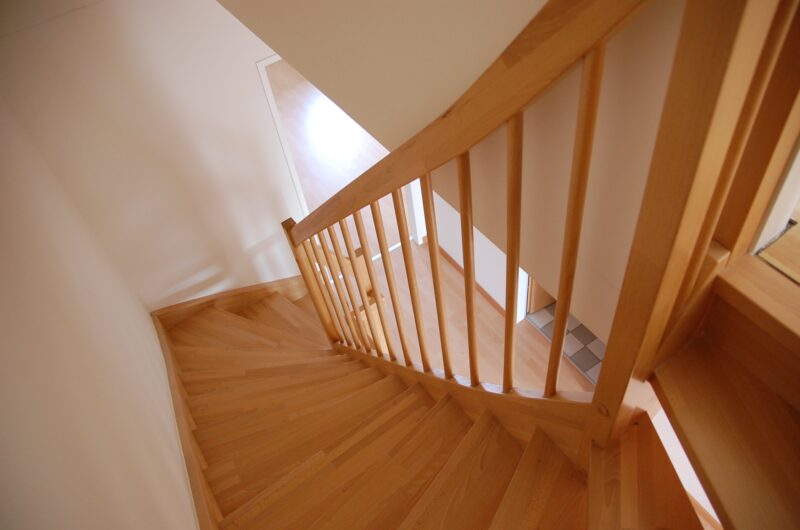Creating durable and elegant furniture or ladders begins with choosing the right hardwood. The best hardwood for making ladders and furniture offers strength, longevity, and visual appeal. In this guide, we’ll dive into the top 10 hardwoods that are ideal for these purposes. We’ll also explore related topics like where to buy wood for furniture making, best material for making furniture, and more. Let’s get started.
Why Choose Hardwood for Ladders and Furniture?
Hardwoods come from deciduous trees and are typically denser and more durable than softwoods. These properties make hardwoods perfect for furniture and ladder construction.
Benefits of Using Hardwood:
- Strength: Hardwoods can support heavy loads, ideal for ladders.
- Durability: They resist wear and last for generations.
- Aesthetics: They offer beautiful grains and colors.
- Value: Furniture made from hardwood retains and even increases its value.
1. Oak
Oak is one of the most popular and reliable hardwoods available today.
Why Oak?
- Very strong and dense
- Resists moisture well
- Beautiful grain pattern
- Ideal for both ladders and furniture
Common Uses:
- Indoor furniture
- Step ladders
- Cabinets and shelving
2. Maple
Maple is a top choice for heavy-use furniture and ladders.
Advantages:
- Extremely hard and dense
- Light color with smooth grain
- Stains well for various finishes
Ideal For:
- Dressers and tables
- Wooden step ladders
- Workbenches
3. Walnut
Walnut is known for its rich, dark tones and striking patterns.
Highlights:
- Durable yet easy to work with
- Offers luxurious aesthetics
- Highly stable
Great For:
- Custom furniture
- Decorative ladder designs
- High-end woodworking projects
4. Cherry
Cherry wood darkens with age, creating a warm and elegant look.
Cherry’s Benefits:
- Smooth texture
- Easy to carve and shape
- Naturally resistant to insects and decay
Best For:
- Indoor furniture pieces
- Decorative wooden ladders
- Kitchen cabinetry
5. Mahogany
Mahogany is often associated with luxury and long-lasting durability.
Key Features:
- Rich reddish-brown color
- Easy to polish and finish
- Resists warping and shrinking
Perfect For:
- Premium furniture
- Ornamental wood ladder designs
- Dining tables
6. Hickory
Hickory is known for its unbeatable strength.
Pros:
- One of the toughest domestic hardwoods
- Shock resistant
- Ideal for heavy-duty use
Ideal Applications:
- Industrial ladders
- Rustic furniture
- Tool handles
7. Teak
Teak stands out for its resistance to water and insects.
Unique Qualities:
- High oil content
- Ideal for outdoor use
- Ages beautifully with minimal maintenance
Best Uses:
- Outdoor ladders
- Garden furniture
- Boat furniture
8. Ash
Ash is both strong and lightweight, making it a versatile choice.
Why Ash?
- Easy to bend and shape
- Good impact resistance
- Light color and appealing grain
Great For:
- Stylish wood ladder designs
- Dining chairs and stools
- Sports equipment
9. Birch
Birch offers a fine grain and a modern aesthetic.
Highlights:
- Smooth and uniform appearance
- Affordable yet durable
- Good for painted finishes
Ideal For:
- Modern furniture designs
- Compact ladders
- Children’s furniture
10. Rosewood
Rosewood is among the most expensive woods for furniture, but worth every penny.
Features:
- Rich color variations
- Dense and hard
- Rare and exotic
Best For:
- Luxury furniture pieces
- Collector’s ladders
- Musical instruments
How to Choose the Best Hardwood for Your Project

Before selecting the best wood for furniture making or ladders, consider these factors:
1. Purpose
Are you building a display ladder or a functional one? Is the furniture decorative or daily-use?
2. Budget
Some hardwoods like Rosewood or Teak can be expensive. Oak and Maple offer good quality at a lower cost.
3. Finish and Look
Choose the wood that matches your aesthetic goals. Cherry and Walnut are great for a rich look, while Birch is good for a clean, modern finish.
4. Workability
Some woods are easier to cut, carve, and finish than others. Soft-grained hardwoods like Cherry are easier to work with than dense woods like Hickory.
Where to Buy Wood for Furniture Making
Finding quality hardwood is essential for any woodworking project. Here are some reliable sources:
Local Lumber Yards
- Offer a variety of domestic hardwoods
- Great for getting hands-on with your selection
Online Retailers
- Websites like Woodworkers Source and Rockler
- Convenient delivery options
Specialty Wood Suppliers
- Ideal for exotic woods like Rosewood or Teak
Salvage Yards and Reclaimed Wood Suppliers
- Eco-friendly and often more affordable
- Unique character and history in the wood
Wood Ladder Design Ideas
Designing a ladder isn’t just about function—style matters too.
Popular Designs:
- A-frame ladders: Ideal for home use
- Library ladders: Classic and elegant
- Lean-to ladders: Simple and space-saving
- Folding ladders: Convenient and compact
Design Tips:
- Choose hardwood that matches your home’s style
- Use finishes that enhance the natural grain
- Add rubber feet or metal accents for extra safety and style
What Is the Best Hardwood for Making Ladders and Furniture?
Choosing the best hardwood for making ladders and furniture depends on your project needs, style preferences, and budget. Each type of wood offers unique strengths. Whether you need the best material for making furniture or are designing an eye-catching wood ladder, the ten hardwoods listed above provide excellent options.
Build with care, choose wisely, and your wooden creations will last for decades.
FAQs
- What is the best hardwood for ladders?
Hickory and Oak are the best hardwoods for durable and safe ladders.
- Which wood is best for indoor furniture?
Maple, Walnut, and Cherry are excellent choices for indoor furniture.
- Where can I buy wood for furniture making?
You can buy from local lumber yards, online stores, or specialty wood suppliers.
- What is the most expensive wood for furniture?
Rosewood and Teak are among the most expensive hardwoods used in furniture making.
- What type of wood is best for wood ladder design?
Ash and Oak work well for both strength and style in wood ladder designs.

